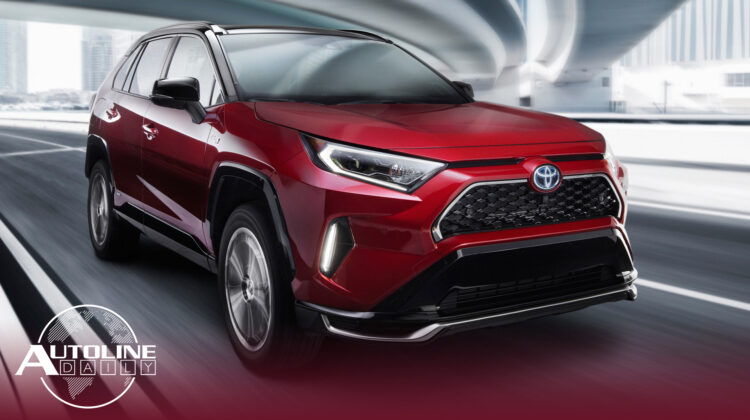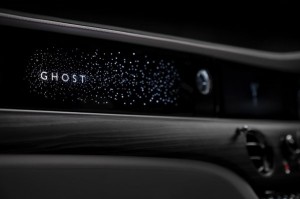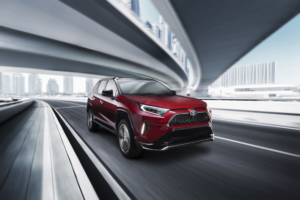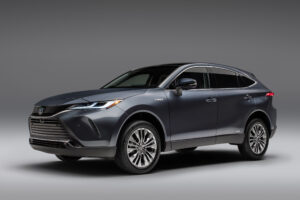
Listen to “AD #2903 – Musk Tweets About Higher Energy Density; Active Wheel Alignment System; Toyota Maximizing CUV Sales” on Spreaker.
Follow us on social media:
Runtime: 11:22
0:07 Elon Musk Tweets About Higher Energy Density Battery
0:46 Tesla Teases Interesting Image
1:12 Tesla Model 3 Holds Its Value
2:04 Hyundai Mobis Wants to Sell to More OEMs
3:27 How Mazda Will Manage Sales Downturn
5:21 Porsche Expands Subscription Services
6:21 Australian Company Develops Active Wheel Alignment
7:14 Rolls-Royce Ghost Gets Illuminated Fascia
8:19 Toyota RAV4 PRIME vs. Venza Impressions
Visit our sponsors to thank them for their support of Autoline Daily: Bridgestone, Intrepid Control Systems and BorgWarner.
This is Autoline Daily, the show dedicated to enthusiasts of the global automotive industry.
MUSK TWEETS ABOUT HIGHER ENERGY DENSITY BATTERY
Elon Musk is dropping all kinds of hints about where battery development is going, even before Tesla holds its much anticipated Battery Day on September 22 that has Tesla fans giddy with excitement. The Panasonic 2170 battery cells that Tesla uses have an energy density of 260 watt hours per kilogram. But Musk tweeted out that’s probably going to 400 watt hours in the next three to four years. That suggests Tesla could chop the battery pack in half without losing any range, which would significantly cut the cost of its cars.
TESLA TEASES INTERESTING IMAGE
Tesla also teased a picture on its website that looks like the image from an electron microscope. Reuters quotes a battery expert from South Korea who believes it shows a silicon nanowire anode which could increase energy density and battery life. Tesla stock briefly rallied on the news, then settled back down again. So we’re probably going to see more teases like this over the next month.
TESLA MODEL 3 HOLDS ITS VALUE
One of the things that has held back EV adoption is low residual values. But that could change thanks to the Tesla Model 3. It’s only a small sample size but early data shows the Model 3 is retaining its value better than other small luxury vehicles and it sells quickly once it hits the used market. According to ISeeCars.com, it was the fastest selling used car between March and June of this year, only taking about 30 days on average to sell. And three-year old models only lost about 10% of their value on average. The Model 3 has done a good job of retaining its value because there isn’t really a comparable alternative in the used market and inventory is low, so you have to pay up to get one and Tesla’s over-the-air updates help improve the vehicle as it ages.
HYUNDAI MOBIS WANTS TO SELL TO MORE AUTOMAKERS
Speaking of EVs, Hyundai’s in-house supplier company called Hyundai Mobis wants to sell EV components to other automakers. Even though it already does business with some other automakers, Mobis gets 90% of its revenue from the Hyundai Group. But the only way it can get the economies of scale it needs to drive down the cost of EV components is to sell them to as many automakers as it can. Hyundai wants to capture 10% of the global EV market by 2025 and it can only get there if it can cut the cost of its electric vehicles.
HOW MAZDA WILL NAVIGATE SALES DOWNTURN
Most automakers are struggling due to the pandemic but not Mazda. While its sales are down in the U.S., it’s far less than any other automaker this year. And as a result, it’s picking up market share. On Autoline This Week, Jeff Guyton, the President of Mazda North America, talked about how it’s been able to navigate the downturn.
Jeff Guyton, President, Mazda North America
“You know it’s interesting to us, when we look at market share in Mazda because we’re modestly sized and we don’t participate in the whole industry in the U.S. When we look at our share, actually it is tempting to see it as something that exploded after the whole COVID crisis began. But we actually saw it beginning to trend well at the end of last year, last calendar year, after the introduction of CX-30. And there are a number of factors, including CX-30, but we’ve seen a pretty steady upward trend since then. And we’re really excited, first about CX-30 but also about the fact that we have now completed more than 140 of our, we call them retail evolution outlets, and that’s really changing the face of Mazda in the United States. Both in terms of appearance and also customer experience. Then coming out of the pandemic we also launched a partnership with Mazda Financial Services, which is powered by Toyota and that’s also making a big impact on our sales. So we see a pretty steady upward trend for our share, starting even before the pandemic.”
For more about Mazda and its plans in North America, you can watch that entire show now on our website or YouTube channel.
PORSCHE EXPANDS ITS SUBSCRIPTION SERVICE
When most automakers are closing or scaling back their subscription services, Porsche is actually expanding its. The automaker introduced a new Single-Vehicle Subscription program that is offered alongside its Multi-Vehicle Subscription, which allows users to switch between models. The new service allows access to a single model for 1 or 3 months, starting on September 25th and is available in Los Angeles, Atlanta, Phoenix, and San Diego. Pricing ranges from $1,500 to $2,600 a month, depending on the model, but those who choose the 1-month subscription will have to pay a nearly $600 activation fee as well. Porsche said it’s launching the new service due to member feedback, but the subscription program, in general, also attracts new people to the brand with 80% of participants new to Porsche, many of whom are much younger than the average age of its current buyers.
AUSTRALIAN COMPANY DEVELOPS ACTIVE WHEEL ALIGNMENT
An Australian company, called DOFTEK, developed an interesting solution to improve vehicle performance, while also improving emissions. Its active wheel alignment system electronically adjusts the camber, caster and toe of the front wheels of a vehicle in real-time to the conditions of a road surface. DOFTEK says the system is compatible with existing suspension geometries and improves handling by 15%, reduces rolling resistance by 10% and peak tire temperatures by 10%. We love the idea of being able to push our car even further to the limits on the track or getting the best possible fuel economy going to the grocery store and all while getting even more service life out of our tires. But messing up your vehicle’s suspension is already an expensive repair, and we wonder what this would add to the cost?
ROLLS-ROYCE GHOST GETS ILLUMINATED FASCIA
The new Rolls-Royce Ghost makes its world premiere in one week and to hold us over until then, the company is showing off one of its features. It’s a bespoke illuminated fascia located in the interior of the vehicle on the passenger side of the dashboard. The Ghost nameplate is surrounded by 850 stars, which are invisible when the car is not in operation. It’s made up of 152 LEDs that are located above and beneath the fascia, which are color matched with the clock and instrument dial lighting. While it doesn’t look like much, it took two years and over 10,000 hours to develop. But it was deliberately minimalistic based on feedback from current Ghost owners who didn’t want a busy design.
TOYOTA RAV4 PRIME VS. VENZA
We had a Toyota RAV4 Prime and a Toyota Venza come through the Autoline Garage and it’s fascinating to compare the two together. Toyota is clearly trying to see how it can maximize sales in the crossover segment, even though, under the skin, each of these vehicles look very similar. They both sit on Toyota’s TNGA platform and both have the same 2.5 liter gasoline engine, and the same CVT. They also have the same wheelbase and track and very similar interior dimensions. But the Prime gets more powerful electric motors than the Venza does. While the Prime delivers 302 total horsepower the Venza delivers 219. And the Prime can go from 0 to 60 miles an hour in 5.7 seconds–according to Toyota, while the Venza does it in 7.6 seconds–according to Car And Driver. The EPA says the Venza will deliver 39 miles to the gallon while the RAV4 Prime delivers 38. But being a plug-in, the Prime can travel 42 miles in EV mode and is also rated at 94 MPGe. So the RAV4 Prime is clearly faster and more fuel efficient but you pay substantially more for that performance. The one we drove was priced at $48,000, while the loaded Venza came in at $41,000. One thing is for sure, both these vehicles are infinitely better than they were a few years ago. The Venza and RAV4 are now very well put together but they used to be hollow-sounding boxes with plenty of shake, rattle and roll. In fact, the Venza sold so poorly that Toyota yanked it off the market in 2015, and is just bringing it back now. The question is why? After all, the RAV4 is Toyota’s best selling vehicle in the American market. But maybe Toyota thinks that with some different styling and a few tweaks here and there it can take that platform and squeeze a few more sales out of the CUV segment.
Even though General Motors keeps hyping its future EVs like the Cadillac Lyriq, what’s going into its showrooms right now are its all-new full-size SUVs. That includes the Tahoe, Suburban, Yukon and Escalade. And to learn more about them we have Tim Herrick, the vice president of GM’s global products coming on Autoline After Hours. GM absolutely dominates that segment and we’ll learn how it plans to maintain its dominance. So join John and Gary this Thursday for a deep dive into some of the most profitable vehicles in the automotive industry.
But that’s it for today’s show, thanks for watching and we’ll see you again tomorrow.
Thanks to our partner for embedding Autoline Daily on its website: WardsAuto.com

John McElroy is an influential thought leader in the automotive industry. He is a journalist, lecturer, commentator and entrepreneur. He created “Autoline Daily,” the first industry webcast of industry news and analysis.











